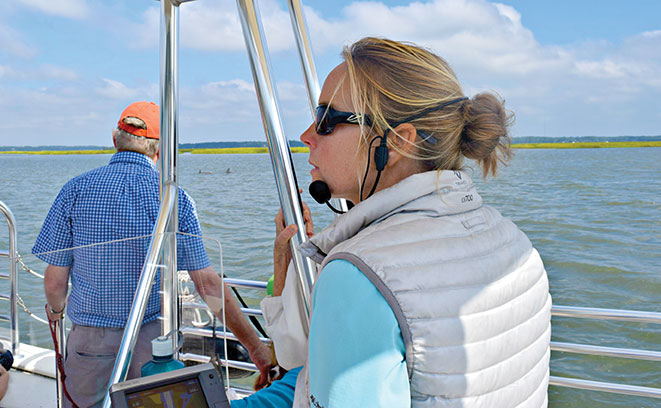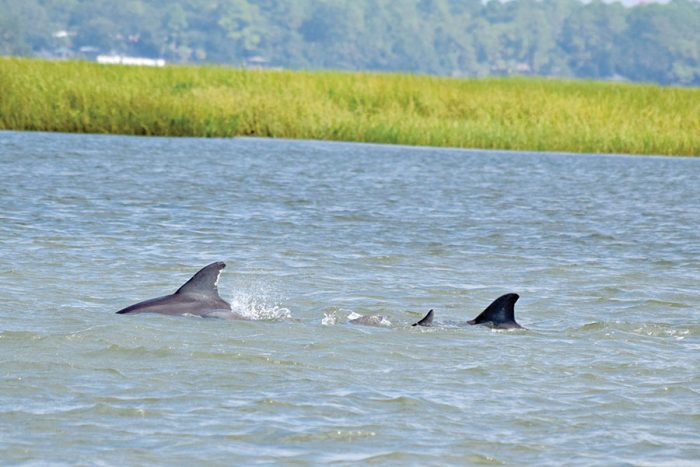By Aileen Goldstein:
Her office is a 200,000-acre salt marsh estuary. Her company vehicle is a 25-foot, flat-bottomed boat. Her dress code is quick-dry pants and shirts with SPF. Her hours are mandated by sea turtles and dolphins. Capt. Amber Kuehn is living her passion every day.
Raised on the banks of the May River and operating the family boat since the age of 12, Kuehn is no stranger to the water. After earning a bachelor’s in Biology from the University of Georgia and a master’s in Marine Biology from Nova Southeastern University, Kuehn went on to obtain a captain’s license while working on dive boats in Florida and Hawaii. Five years later, she returned home to Bluffton, S.C.
Kuehn now manages the Sea Turtle Protection Program at the Coastal Discovery Museum on Hilton Head Island. Kuehn also provides eco tours aboard her own boat, Spartina. Kuehn’s boat was custom created by Jones Brothers Marine and is a stable, 11-foot-wide bateau boat capable of holding 24 people. “I wanted to do field trips and to take a whole classroom out at once, and this one will do that,” she said. “The ecology tour talks about everything from the mud flat to the marsh grass to the microorganisms and the bigger animals and how they all depend on each other.”
Kuehn also offers guests an opportunity to observe scientists at work during the dolphin research tour, a partnership with the University of South Carolina at Beaufort’s marine biology department. Associate Professor of Biology, Eric Montie, and Kuehn collaborated to create an experience for passengers while interns collect data for research. The department specialized in bioacoustics, which is the recording of the underwater soundscapes. Multiple sound recording devices are submerged in the May River to capture the sounds created by spawning fish, dolphins and other marine animals. The devices also measure the salinity, temperature, pH levels, oxygen levels and more.
The collected data is used to assess the health of the fish population and the river. Kuehn stresses the value of this research: “This is important, especially when Bluffton is the fastest growing municipality in South Carolina. If you start to see a drop in the salinity in a salt marsh estuary, you are going to start to see larval animals dying and your juveniles will be less and less.”
While the recreational and commercial fishers will eventually notice a decrease in the number of fish, the data collected by interns will provide factual numbers that can be used by legislatures to create limits and regulations in efforts to maintain healthy populations.
Kuehn’s favorite part of her work is when she is able to teach about the importance and fragility of the salt marsh. “I really like it when I get the people on and they are interested. I have the most rewarding experience with locals because they are really interested and they have no idea about how awesome and unique it is here,” she said.


